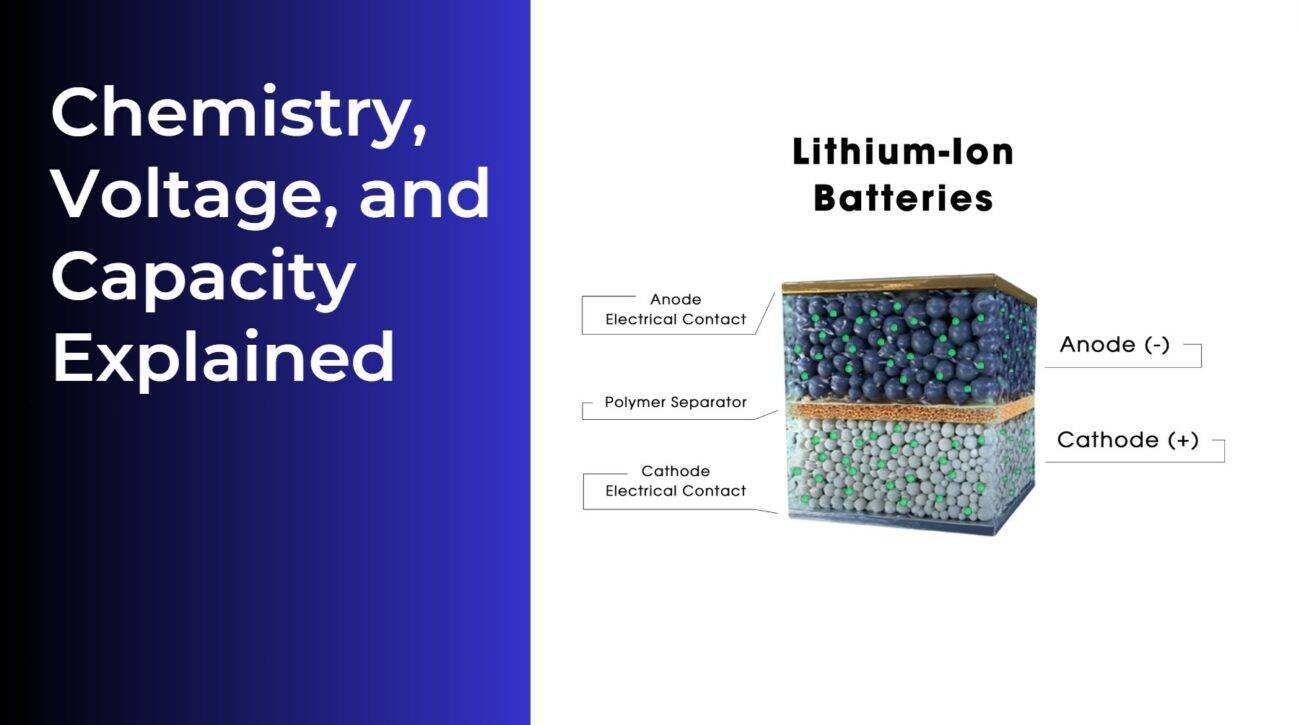Ever wondered why your devices run out of battery unexpectedly? This blog post simplifies the mystery of Ah (Ampere-hours) and its role in battery performance. Whether you’re a tech enthusiast or just want longer-lasting devices, understanding Ah is key. Get ready to power up your knowledge!
Understanding Ah (Ampere-hours)
Ah (Ampere-hours) is a term often heard in battery discussions, but what does it really signify? Imagine Ah as your battery’s fuel tank, indicating the amount of charge it can store and deliver over time.
- Understanding Ah: Ah is like the capacity of your battery’s fuel tank. For instance, a 5Ah battery can provide 5 amps of current for one hour. Higher Ah ratings mean longer-lasting power.
- Ah vs. Voltage: Unlike voltage, which measures pressure, Ah indicates how long electrons will flow. Voltage is about force, while Ah is about endurance.
- Importance of Ah: Knowing a battery’s capacity in Ah helps estimate device runtime on a single charge. It also aids in comparing and choosing batteries that align with specific power requirements. Now, let’s explore how to calculate Ampere-hours for different battery types!
Why is Ah important in a battery?
- Performance Evaluation: The Ampere-hour (Ah) rating is crucial for assessing a battery’s performance and capacity. It indicates the amount of charge the battery can deliver over time, essentially revealing how long it can sustain a load before recharging.
- Applications and Efficiency: In applications demanding continuous power, such as solar energy systems or electric vehicles, knowing the Ah rating is essential. A higher Ah rating means more stored charge and a longer-lasting power supply, ensuring efficient energy delivery.
- Calculation and Types: Calculating Ah involves multiplying current flow by the time a battery can provide it without losing efficiency. Different batteries have varying Ah ratings due to their internal chemistry and design, with lithium-ion batteries generally having higher ratings than lead-acid batteries.
- Impact on Performance: Ah not only affects longevity but also influences voltage stability and overall efficiency. Higher-capacity batteries maintain stable voltages, providing consistent power levels for extended durations.
- Factors Influencing Choice: Individual choices for batteries with specific Ah ratings depend on factors like required runtime, power consumption, charging options, and budget constraints.
In conclusion, understanding and considering the Ampere-hour rating when selecting a battery ensure choosing one that aligns with specific application needs, whether it’s for extended energy storage or high-power output without frequent interruptions.
How to calculate the Ah of a battery
- Identify Device Current: Find the current (in Amperes or milliamperes) your device draws, usually located on the device or in its user manual.
- Estimate Usage Time: Determine how long you plan to use the device before recharging, converting the duration into hours if initially given in minutes.
- Ah Calculation: Calculate Ah by dividing the total charge used by the number of hours: Ah = Charge Used / Hours. For instance, if your device draws 1 Ampere and runs for 5 hours, the calculation is 1 A * 5 h = 5 Ah.
Remember, this calculation assumes a constant discharge rate. In real-world scenarios with varying currents, precise Ah calculations may be challenging. Mastering this calculation empowers you to select batteries with capacities matching your usage needs, ensuring uninterrupted power supply.
Types of batteries and their Ah ratings
Understanding the Ah (Ampere-hour) ratings of different battery types is crucial for selecting the right one for your needs. Let’s explore the common types and their unique characteristics.
- Lead-Acid Batteries:
- Commonly used in automotive applications.
- Lower Ah ratings but known for providing high bursts of power for starting engines.
- Lithium-Ion Batteries:
- Popular in portable electronics for higher energy density.
- Typically have higher Ah ratings, offering longer energy storage.
- Nickel-Metal Hydride (NiMH) Batteries:
- Strike a balance between capacity and cost-effectiveness.
- Used in hybrid vehicles and consumer electronics.
Choosing the Right Battery: Consider your specific needs when selecting a battery based on Ah ratings. For heavy-duty applications like electric vehicles, opt for larger Ah ratings. For smaller devices or occasional use, lower Ah-rated batteries may be more cost-effective. Remember to factor in considerations like voltage range compatibility and discharge characteristics for overall performance suitability.
The impact of Ah on battery performance
In the world of batteries, the Ampere-hour (Ah) rating significantly influences performance. Let’s delve into how this rating affects battery capabilities and why it matters.
- Capacity and Runtime:
- Ah rating reflects a battery’s capacity.
- Higher Ah ratings mean longer-lasting power, crucial for applications requiring continuous supply like electric vehicles or backup systems.
- Discharge Rates and Temperature:
- Discharge rates impact effective capacity.
- Extreme temperatures can affect a battery’s ability to deliver its full Ah capacity.
- Choosing the Right Capacity:
- Using a larger capacity (higher Ah) battery isn’t always advantageous.
- Consider runtime needs and budget constraints for an informed decision.
Conclusion: Understanding how the Ah rating influences battery performance empowers users to make optimal choices based on specific requirements, ensuring a perfect match between runtime and budget.
Factors that affect the Ah of a battery
Understanding a battery’s Ampere-hour (Ah) rating involves considering various factors influencing its performance. Let’s explore the key elements that impact how long a battery can sustain a certain current flow before needing a recharge.
- Temperature Impact:
- Extreme temperatures, whether high or low, adversely affect battery capacity and overall performance.
- High temperatures increase self-discharge, while cold temperatures reduce available energy.
- Discharge Rate Influence:
- Discharging a battery slowly yields higher capacities compared to rapid discharges.
- Cycling Effects:
- Repeated charging and discharging cycles gradually degrade batteries, reducing their Ah capacity over time.
- Ageing Factors:
- As batteries age, internal chemistry changes, leading to decreased efficiency and lower Ampere-hour ratings.
- Cycling Depth Impact:
- The depth of battery discharge affects longevity and Ampere-hour capacity. Deep cycling may lead to faster degradation.
- Charging Methods:
- Charging methods, like fast or trickle charging, influence charge acceptance rate and overall Ampere-hour capacity.
Conclusion: Awareness of these factors is vital when selecting batteries for applications requiring sustained power supply, ensuring optimal performance and longevity.
Choosing the right battery based on Ah needs
Selecting the right battery based on its Ampere-hour (Ah) rating is crucial for optimal performance. Here’s a concise guide to help you make an informed decision.
- Consider Your Power Needs:
- Evaluate the devices or applications you’ll power with the battery.
- Assess power consumption and required runtime to match with an appropriate Ah rating.
- Balance Capacity and Portability:
- Higher Ah ratings mean longer-lasting batteries.
- Strike a balance between capacity and portability, considering the physical size and weight.
- Evaluate Discharge Rate and Environmental Conditions:
- Check if the battery can handle rapid power demands or fast charging.
- Consider the operating environment, as extreme temperatures can impact performance.
- Refer to Manufacturer Specifications:
- Always refer to reputable manufacturers’ specifications for accurate information.
- Consult professionals for insights into compatibility or alternative solutions.
Conclusion: Choosing the right battery based on its Ah rating ensures efficient and reliable operation tailored to your specific needs. Assess your power requirements accurately for an informed decision. Happy powering!















